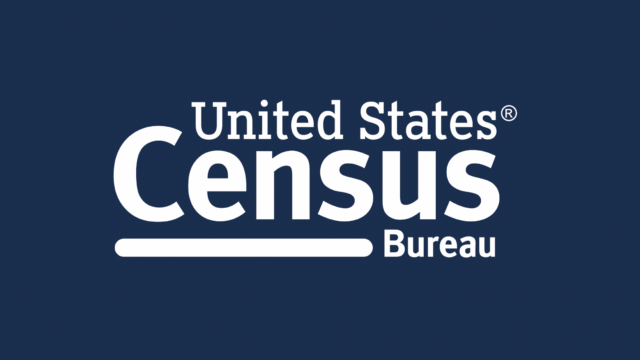Census Privacy
Background
Protecting the confidentiality of personally identifying census data safeguards the privacy of respondents and ensures a more accurate enumeration.
Documents
Unique among federal agencies, the U.S. Census Bureau is authorized by law to compel sensitive personal information from every person in the United States, including age, sex, race, ethnicity, family relationships, and homeownership status. The extraordinary reach of the Bureau into the private lives of Americans brings extraordinary risks to privacy. It is therefore vital—and required by law—that the Bureau protect the confidentiality of census responses across every data product it publishes.
A BRIEF HISTORY OF the Census
The counting of citizens can be traced back to the Biblical recordings of Moses. In the Book of Numbers, Moses counted people in areas surrounding his kingdom in order to strengthen the count of the population under his control. Scholars discuss that the list of names was used as an original census, creating a legal identity of and control over a group of people.
The history of the United States census dates back to pre-Revolutionary times. It is thought that the census was developed to establish an equitable way to distribute the burden of the Revolutionary War, both economically and in manpower. The expense of the war was proposed to be distributed based upon population, among the 13 colonies, as the new United States government was created. In order to make this uniform, the concept of payment by distribution was included in the Articles of Confederation. The original Congress finally voted that the first distribution method would be by the cumulative value of property within each State. Enumeration of population became the chosen method directly after the Revolutionary War.
The U.S. Census was established in Article I, Section 2, Clause 3 of the U.S. Constitution, providing that “Representatives…shall be apportioned among the several States which may be included within this Union, according to their respective Numbers . . . The actual Enumeration shall be made within three Years after the first Meeting of the Congress of the United States, and within every subsequent Term of ten Years, in such Manner as they shall by Law direct.”
The minimal enumeration of the population described in the Constitution was quickly expanded to include business and socioeconomic information. The first enumeration counted free persons, including women, children, and those bound to service, but only counted three-fifths of enslaved persons and excluded untaxed American Indians. As of March 1, 1790, it was directed that U.S. Marshals gather the name of head of families, number of people in each family, all other free people, and slaves. In addition to this information, James Madison sought occupational and industrial information, but Congress did not authorize collection of this information in the first census.
Nevertheless, as historian Robert C. Davis argues, “the crucial point is that the first act pushed beyond the simple constitutional provision, thereby establishing a precedent for the enormous expansion of the census in the following century.” By 1800, the census collected more refined age information; by 1810 the census collected economic information; by 1820 the census collected more detailed occupational information; by 1830 the census collected information on physical disability; and by 1840 the census collected investment and productivity information. Through this expansion, protections were developed to maintain the confidentiality of economic questions, but the population survey was publicly posted until 1850 in order to allow individuals to check for errors. In 1870, the Census for the first time collected complete information from millions of Black Americans who had been enslaved prior to the Civil War (though regular undercounting of black populations would continue).
The U.S. Census has been administered every ten years since the Revolutionary War, and it was intended to be used primarily for the apportionment of Representatives for Congress. The complexity of the census has grown with the expansion of the United States; the U.S. government has found extensive uses for census related statistics. The census has also been crucial in tracking the population needs of various regions and understanding the structural composition of the nation’s population. Politically, the census has become a tool in the process of congressional reapportionment.
Privacy and the Modern Census
Pursuant to the Census Clause, Congress has directed the Secretary of Commerce and the U.S. Census Bureau to “take a decennial census of population,” and to “determine the inquiries, and the number, form, and subdivisions” of the questionnaires to be used in the census. The Census Bureau also undertakes a variety of demographic, economic, and geographic studies in addition to the decennial census.
The census forms the most inclusive federal database of American citizens, but with the Bureau’s nationwide compilation of personal data comes significant privacy and confidentiality risks. These risks include reidentification and reconstruction (the practice of linking individuals identities to anonymous census records); marketing solicitations; and political or non-statistical misuses of data.
Because of these risks, federal law imposes a strict duty on the Census Bureau to protect the confidentiality of individual responses. The Bureau is prohibited from making “any publication whereby the data furnished by any particular establishment or individual under this title can be identified” and may not use census responses “for any purpose other than the statistical purposes for which it is supplied[.]” The Bureau may only “furnish copies of tabulations and other statistical materials which do not disclose the information reported by, or on behalf of, any particular respondent.” The Act also commands that census responses may not be “used to the detriment of any respondent or other person to whom such information relates.” Moreover, any employee of the Bureau who “publishes or communicates any information, the disclosure of which is prohibited” by the Census Act “shall be fined not more than $5,000 or imprisoned not more than 5 years, or both.”
The Census Bureau has at times breached its duty to protect the privacy of census respondents, often in ways harmful to marginalized populations. Census records were wrongly disclosed to draft boards during World War I; sought by the Department of Justice for use in deportation cases in the 1920s; provided to the Secret Service during World War II to identify Japanese Americans; and furnished to the Department of Homeland Security post-9/11 to identify cities containing significant numbers of Arab-American residents. These episodes underscore the importance of strict adherence by the Census Bureau to its confidentiality obligations.
Yet by and large, the Census Bureau has continued to improve its privacy protections over time. For example, in the 2020 Census, the Bureau elected to adopt differential privacy for its data products. By injecting controlled amounts of statistical noise into published census tables, the Bureau can produce useful data while simultaneously providing mathematical guarantees of privacy. Differential privacy allows the Bureau to protect against increasingly sophisticated reconstruction and reidentification attacks that threaten the confidentiality of individual census responses.
EPIC’s Work on Census Privacy
EPIC has a long history of working to protect the confidentiality of census data. In 2004, the Census Bureau revised its “sensitive data” policy after an EPIC Freedom of Information request revealed that the Department of Homeland Security had improperly acquired data on Arab Americans from the Census Bureau following 9/11. In 2018, EPIC filed suit against the Department of Commerce to block the introduction of the citizenship question to the 2020 Census, alleging that the Bureau failed to complete several privacy impact assessments required under the E-Government Act of 2002. EPIC also filed amicus briefs before a federal district court and the U.S. Supreme Court in Department of Commerce v. New York, the case which ultimately forced the withdrawal of the citizenship question. In 2021, EPIC filed an amicus brief defending the Census Bureau’s use of differential privacy to protect the confidentiality of census responses.
Recent Documents on Census Privacy
-
Amicus Briefs
New York v. Department of Commerce (2020 Census Case)
US Supreme Court
Whether the Department of Commerce and Census Bureau violated the Administrative Procedure Act when it added a citizenship question to the 2020 Census
-
Privacy Cases
EPIC v. Commerce (Census Privacy)
US District Court for the District of Columbia
Seeking to block the unlawful collection of personal data concerning citizenship status via the 2020 Census
Top Updates
Census Bureau Director Defends Use of Differential Privacy
December 1, 2022

Resources
-
The Census Act of 1790
U.S. Census Bureau
-
Data Protection and Privacy Policy
U.S. Census Bureau
-
Disclosure Avoidance Modernization
U.S. Census Bureau
-
Balancing Data and Confidentiality in the 2020 Census
danah boyd | 2020
-
Differential Privacy and the US Census
Cynthia Dwork | 2019
-
All the Data on All the People
Latanya Sweeney | 2015
-
Challenges to the Confidentiality of U.S. Federal Statistics
Margo Anderson & William Seltzer | 2017
-
Simple Demographics Often Identify People Uniquely
Latanya Sweeney | 2000

Support Our Work
EPIC's work is funded by the support of individuals like you, who help us to continue to protect privacy, open government, and democratic values in the information age.
Donate